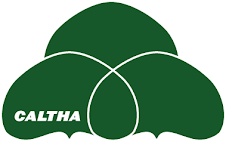- $350,000 to the Michigan Department of Environmental Quality For Nutrient Reduction in the River Raisin and Lake Erie Basin: This project will reduce agricultural sources of nitrogen and phosphorus by 30 -50% through the installation of 133 water control structures on 4,000 – 5,000 acres of tilled cropland. Environmental benefits will include a reduction in nitrate and dissolved reactive phosphorus loadings from the treated areas to the River Raisin watershed and the Western Lake Erie Basin. This project builds on an earlier GLRI project which promoted voluntary best management practices designed to reduce nutrients from agricultural operations in the Raisin River watershed.
- $265,980 to the Michigan Department of Agriculture and Rural Development to Reduce Sediment and Nutrients Entering the Western Lake Erie Basin: The Michigan Department of Agriculture and Rural Development will use this funding to increase implementation of effective conservation practices on farm fields to significantly reduce the quantity of sediment and nutrients discharged into the Western Lake Erie Basin. The project will prevent 30,400 tons of sediment, 42 tons of phosphorus and 67 tons of nitrogen from entering Lake Erie tributaries; 176 acres of wetlands will be restored.
- $499,741 to the Grand Traverse Bay Watershed Initiative for the Kids Creek Stormwater Reduction Project: This project will improve water quality on a major tributary to Kids Creek, an impaired stream in the Grand Traverse Bay watershed, by replacing underground culverts and channelized ditches with a natural meandering channel. The new stream channel will eliminate 73,000 square feet of impervious area, establish 27,000 square feet of floodplain and create a 15- to 30-foot-wide buffer. Green infrastructure will also be installed to further reduce stormwater and sedimentation impacts to Kids Creek.
- $995,204 to the Michigan Department of Environmental Quality for Kawkawlin River Targeted Phosphorus and E. Coli Reduction: This project will implement best management practices (BMPs) identified in the Kawkawlin River Watershed Management Plan. The BMPs include installing six miles of agricultural buffers, 1,700 acres of wind barriers, 1,000 feet of livestock exclusion fencing and planting 6,000 acres of cover crops. This project is expected to prevent E. coli, 15,491 pounds of phosphorus (30 % of the load reduction goal for the watershed) and 10,921 tons of sediment from reaching Saginaw Bay each year.
- $798,282 to the Muskegon River Watershed Assembly for Restoration of Riparian Areas in the Muskegon River Watershed: This project will reforest more than 400 acres of riparian land, restore 150 acres of streambank using native vegetation, put 150 acres of revegetated or natural riparian land into conservation easements, develop 14 forest stewardship plans and implement proper erosion control best management practices at four riparian sites in high priority sub-watersheds of the Muskegon River. This project is expected to prevent 100 tons of sediment, 1,000 pounds of phosphorus and 6,000 pounds of nitrogen from reaching the Muskegon River, the Muskegon Lake Area of Concern and Lake Michigan each year.
- $189,376 to Michigan State University for Locating and Targeting High-Impact Farm Fields to Reduce Phosphorus Discharges: This project will provide electronic mapping technology to agricultural conservation technicians (such as federal and state natural resource agency employees) that will help the technicians identify and target farm fields that are especially prone to high rates of phosphorus discharge. The technicians can then begin working with the owners of these targeted fields and encourage the implementation of conservation practices such as cover crops and improved management of phosphorus and drainage water. As a result of this project, conservation practice implementation can be focused on farm fields having the greatest impacts on water quality, ultimately resulting in a reduction of soluble phosphorus loading in the Saginaw basin.

